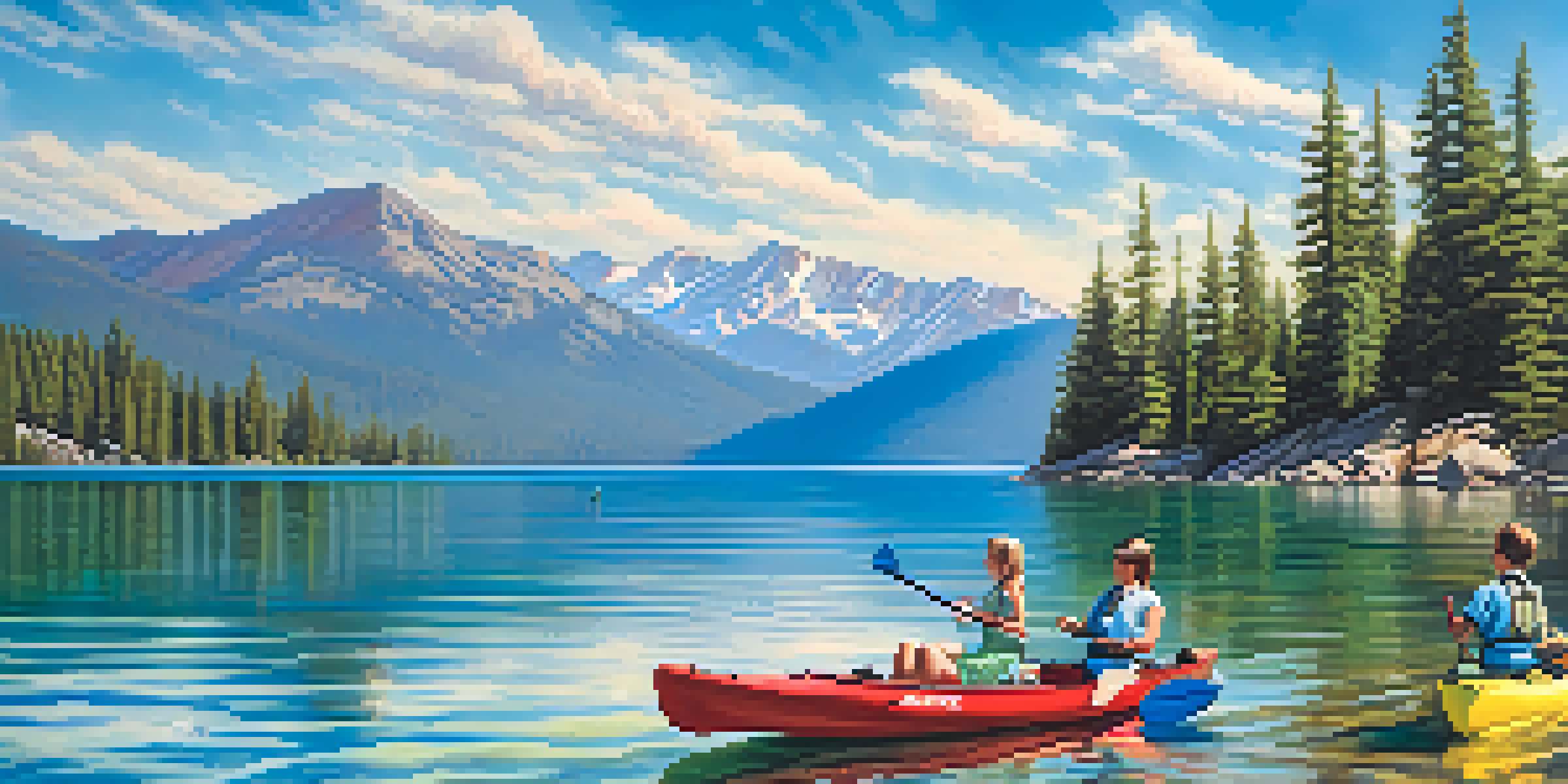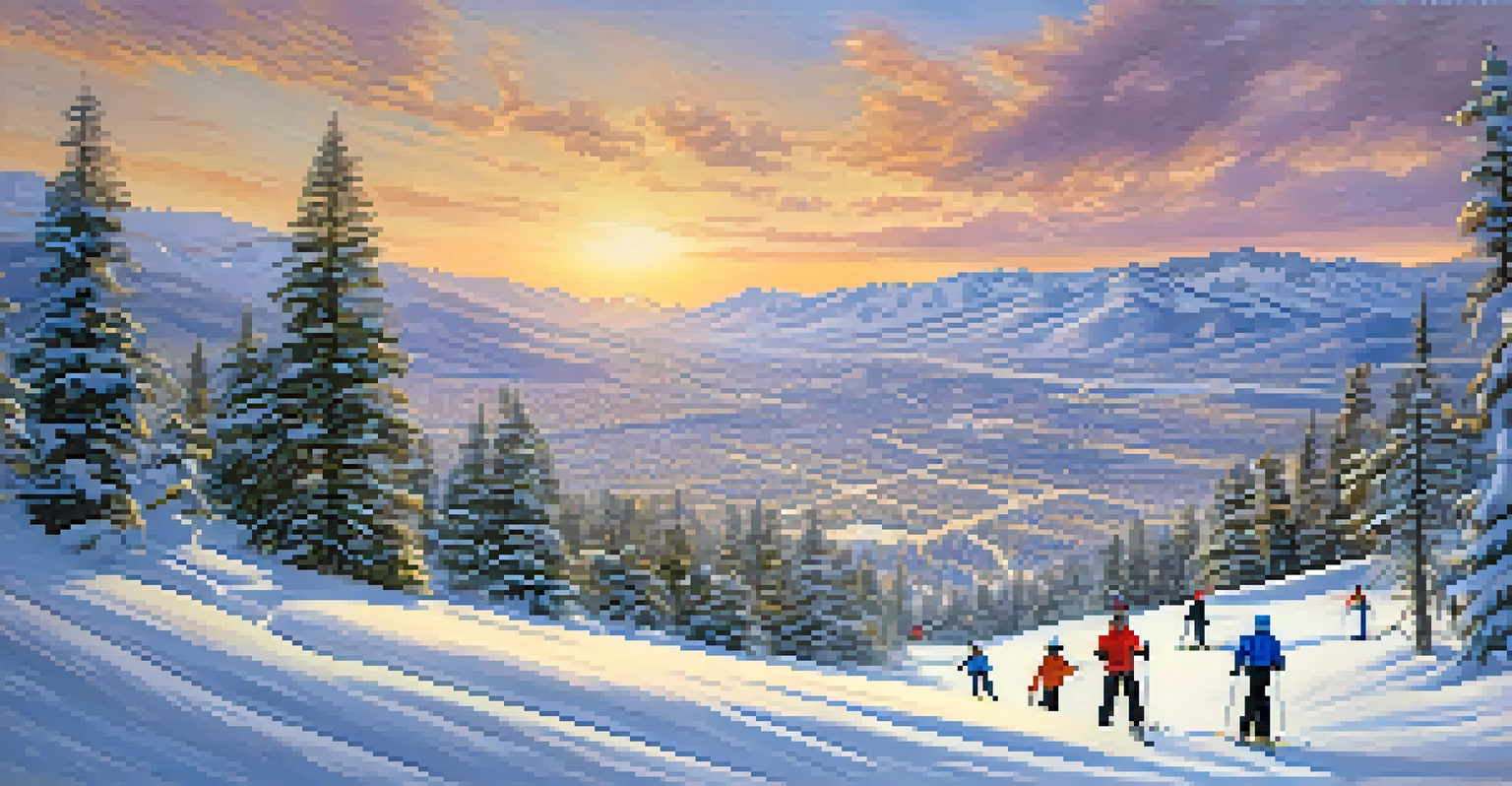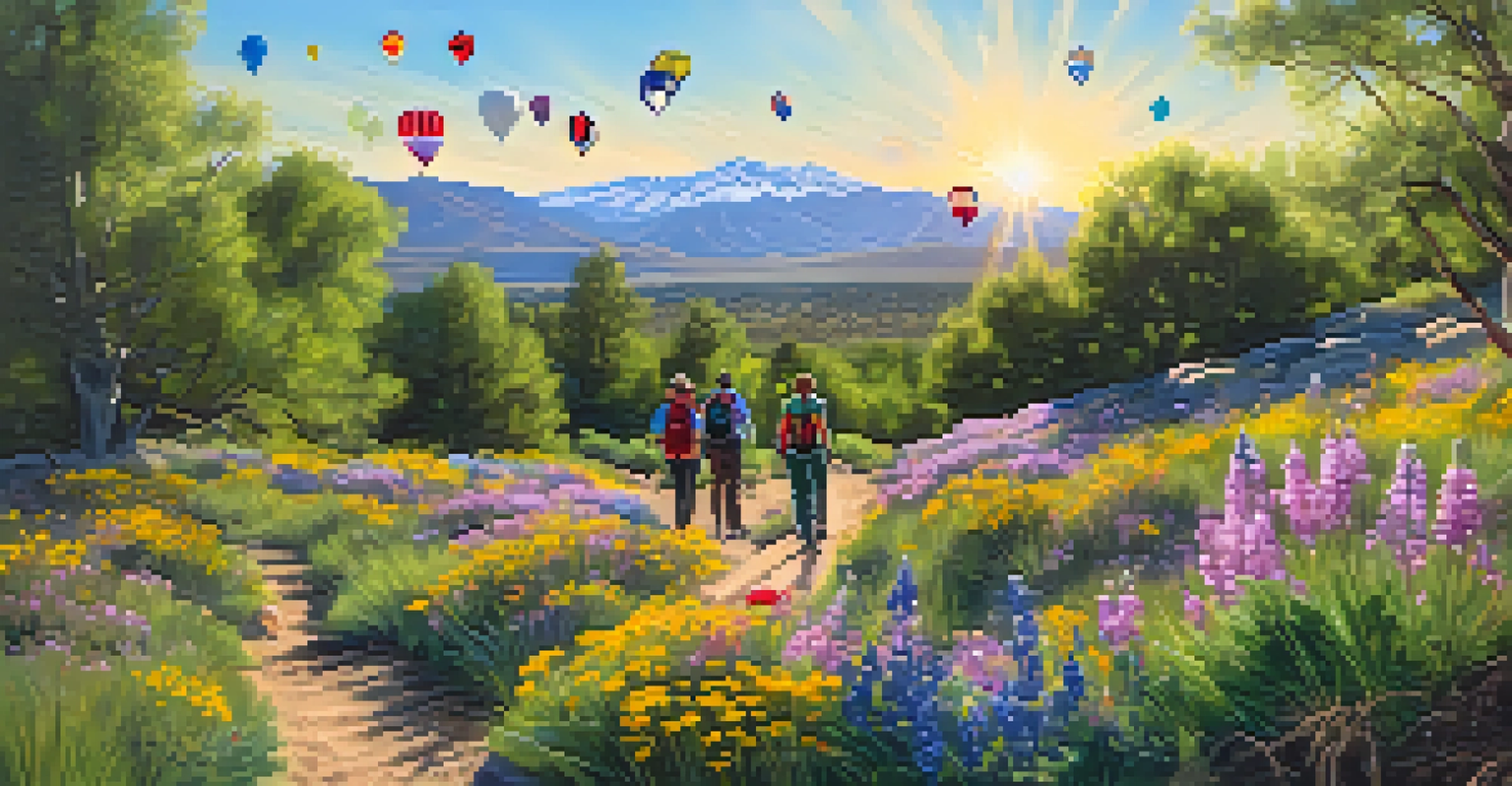Reno's Climate: Effects on Outdoor Recreation and Tourism

Understanding Reno's Unique Climate Characteristics
Reno, often called the 'Biggest Little City in the World,' is nestled in the Sierra Nevada mountains. This location gives it a high desert climate, characterized by warm summers and cold winters. The average annual temperature hovers around 50°F, with significant seasonal fluctuations that can impact outdoor activities.
Nature provides a free lunch, but only if we control our appetites.
Rainfall is relatively low, averaging about 7 inches per year, which helps maintain dry, sunny conditions ideal for many recreational pursuits. However, the snow in winter creates opportunities for skiing and snowboarding, attracting winter sports enthusiasts. This diverse climate, therefore, caters to a wide range of outdoor activities throughout the year.
Understanding these climatic conditions is crucial for tourists and outdoor enthusiasts alike. Whether planning a summer hike or a winter adventure, knowing what to expect can enhance their experience. Consequently, Reno's climate directly shapes the types of recreational activities available and the tourism seasonality.
Summer Activities: Embracing the Warm Weather
During the summer months, Reno transforms into an outdoor paradise. With temperatures often reaching the 80s and 90s, locals and visitors flock to nearby lakes, parks, and hiking trails. Popular spots like Lake Tahoe and the Truckee River offer various activities, including kayaking, rafting, and fishing.

The long daylight hours of summer also allow for extended exploration. Events such as outdoor concerts, festivals, and farmers' markets populate the calendar, drawing tourists eager to enjoy the vibrant atmosphere. Additionally, the warm evenings are perfect for stargazing, a favorite pastime in this low-light pollution area.
Reno's Climate Shapes Recreation
Reno's unique high desert climate offers diverse outdoor activities year-round, from summer hiking to winter skiing.
Thus, summer in Reno not only supports diverse outdoor activities but also boosts local businesses. Restaurants, rental shops, and tour companies thrive as they cater to the influx of tourists eager to make the most of the beautiful weather.
Winter Wonders: Skiing and Snow Sports
When winter arrives, Reno becomes a hub for skiing and snowboarding enthusiasts. With numerous ski resorts just a short drive away, such as Mount Rose and Northstar, the area attracts visitors seeking thrilling slopes and breathtaking views. The combination of high elevation and reliable snowfall creates ideal conditions for winter sports.
The environment is where we all meet; where we all have a mutual interest; it is the one thing all of us share.
Beyond skiing, winter activities in Reno include snowshoeing, ice skating, and sledding, making it a family-friendly destination. Events like the Reno Riverwalk District’s holiday celebrations add to the winter charm, drawing both locals and tourists alike. This seasonal appeal is a significant contributor to Reno's economy during the colder months.
The winter season also allows for unique experiences, such as guided snowmobile tours and cozy cabin rentals. These offerings ensure that visitors have plenty of ways to enjoy the snowy landscape, solidifying Reno's reputation as a winter wonderland.
Springtime: Blooming Trails and Events
As spring unfolds, Reno's environment bursts into color, making it an excellent time for outdoor activities. The temperatures begin to warm, averaging in the 60s and 70s, allowing for hiking, biking, and exploring the stunning natural beauty of the region. Trails like the Tahoe Rim Trail become popular spots for both locals and visitors.
Spring also marks the beginning of various outdoor events and festivals that celebrate the season. The Great Reno Balloon Race, for example, captivates audiences with colorful balloons filling the sky, drawing thousands of spectators. Such events not only enhance the tourism appeal but also foster a sense of community.
Tourism Fuels Local Economy
The influx of tourists driven by Reno's outdoor attractions significantly supports local businesses and job creation.
Additionally, the increased rainfall during spring helps to rejuvenate the landscape, creating lush scenery perfect for photography and sightseeing. This season serves as a bridge between the winter's snowy escape and the summer's vibrant adventures, offering diverse options for outdoor recreation.
Environmental Challenges: Drought and Water Supply
Despite its many outdoor advantages, Reno faces environmental challenges, particularly concerning water supply and drought. The region's desert climate means that water conservation is essential, especially during prolonged dry spells. This reality can impact recreational water activities as lakes and rivers may experience lower water levels.
Drought conditions can also lead to restrictions on certain outdoor activities, influencing tourism. For instance, during extreme drought years, fishing and boating may be limited, creating challenges for local businesses reliant on water-based recreation. It’s crucial for tourists to stay informed about any restrictions that may affect their plans.
Furthermore, these challenges highlight the importance of sustainable practices in outdoor recreation. Awareness of water conservation can lead to more responsible tourism, ensuring that Reno's natural beauty remains accessible for future generations.
The Role of Tourism in Supporting Local Economy
Tourism plays a vital role in Reno's economy, significantly impacting local businesses and job creation. Outdoor recreation, driven by the city's climate, attracts a steady stream of visitors year-round, bolstering industries such as hospitality, retail, and outdoor gear rentals. This influx of tourism dollars helps sustain the local economy and community.
Additionally, events and festivals related to outdoor activities provide opportunities for local artisans and food vendors to showcase their products. The synergy between tourism and local culture enhances the overall visitor experience and encourages repeat visits. When tourists engage with the local community, it fosters a sense of belonging and appreciation for the area.
Adapting to Climate Change
Reno must embrace sustainable practices to mitigate the effects of climate change on its outdoor recreation and tourism sectors.
Ultimately, the relationship between Reno's climate and tourism is mutually beneficial. As outdoor recreation continues to thrive, it supports economic growth while also promoting awareness of Reno's unique natural environment.
Future Outlook: Adapting to Climate Change
Looking ahead, Reno must adapt to the potential impacts of climate change on its outdoor recreation and tourism sectors. With changing weather patterns, the region may experience altered precipitation and temperature trends, which can affect seasonal activities. For instance, warmer winters could lead to less snowfall, impacting ski resorts.
To address these challenges, local authorities and businesses are exploring sustainable practices and initiatives to protect the environment. This includes investing in water conservation efforts and promoting eco-friendly tourism options that lessen the ecological footprint. By prioritizing sustainability, Reno can continue to thrive as an outdoor recreation destination.

Moreover, community engagement and education are key to fostering a resilient tourism industry. By involving locals in conservation efforts and raising awareness about climate impact, Reno can build a stronger, more sustainable future for both residents and visitors. The commitment to preserving its natural beauty will ensure that Reno remains a top choice for outdoor enthusiasts.